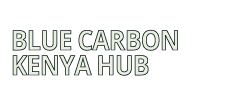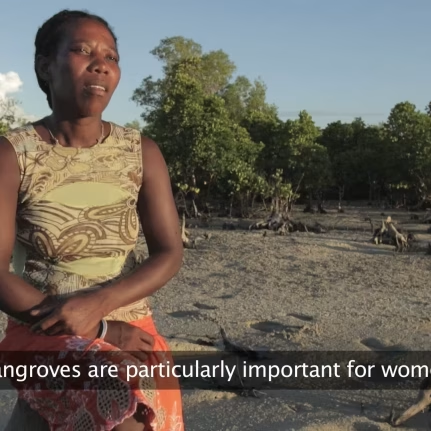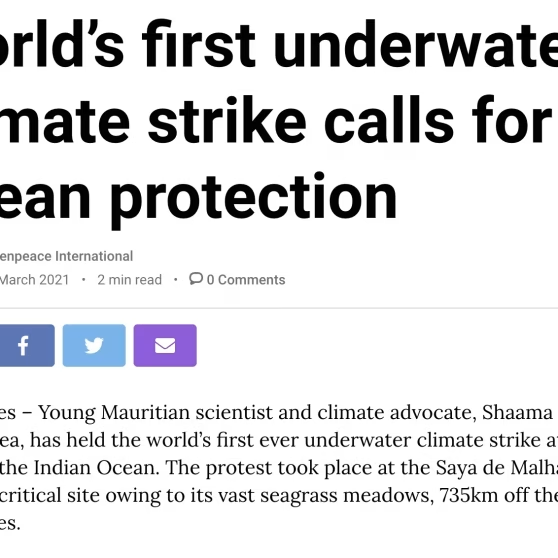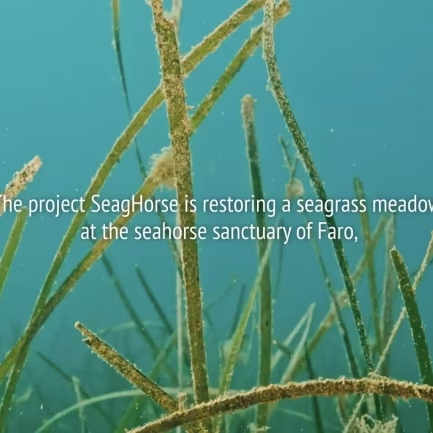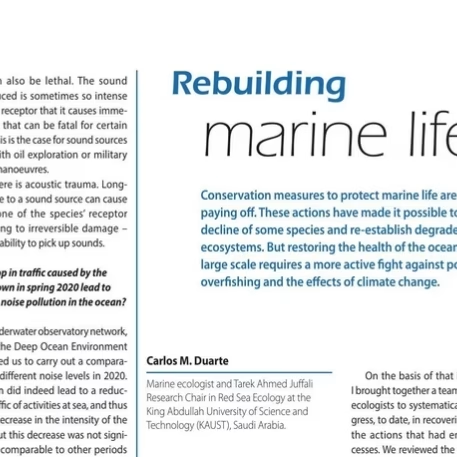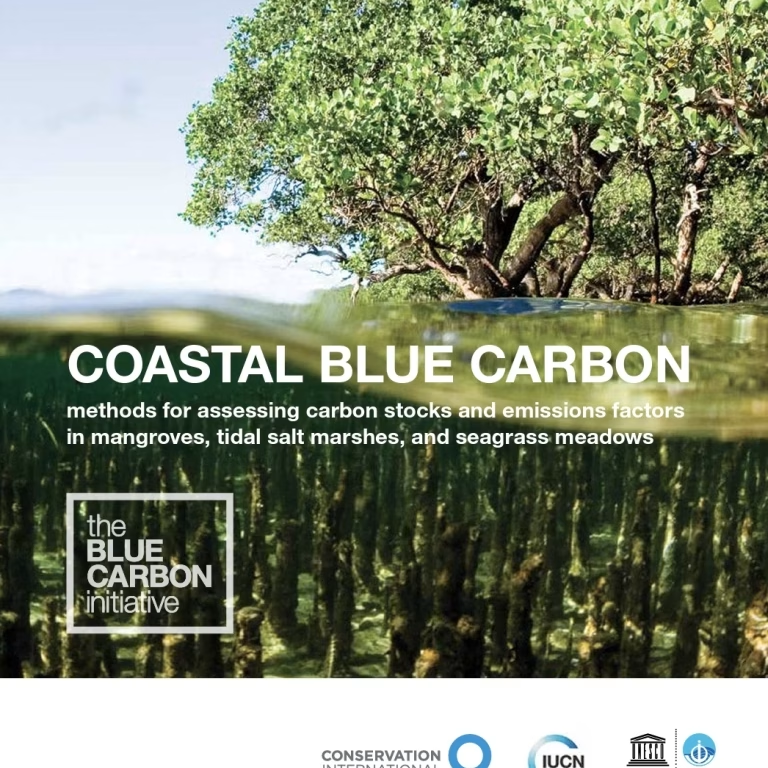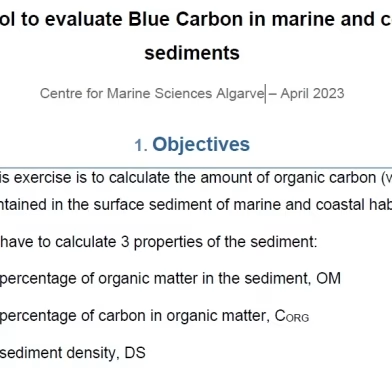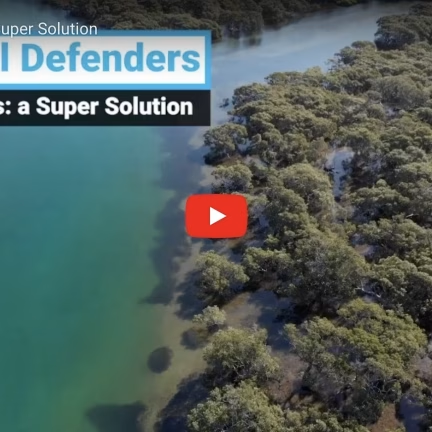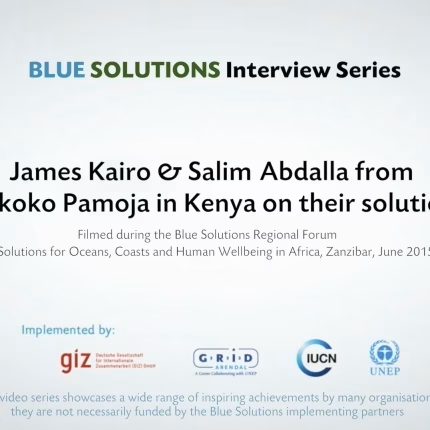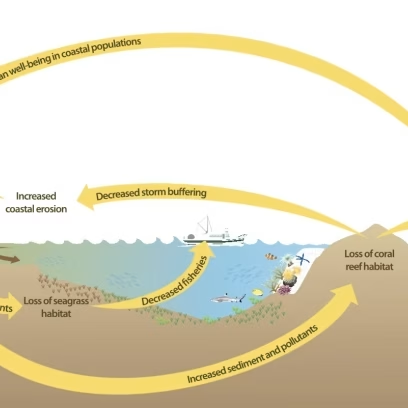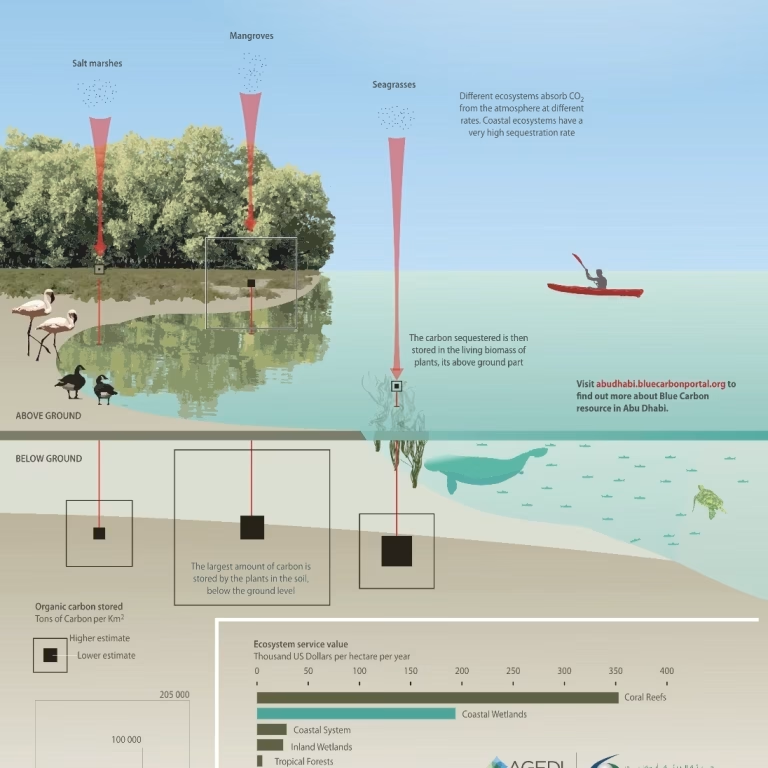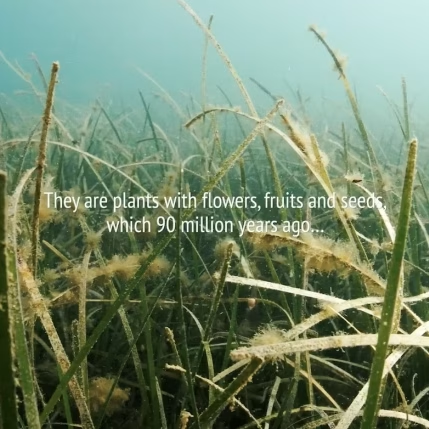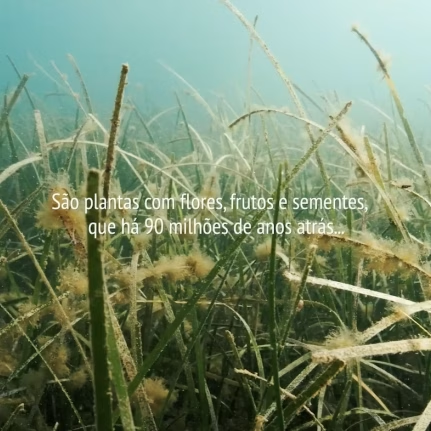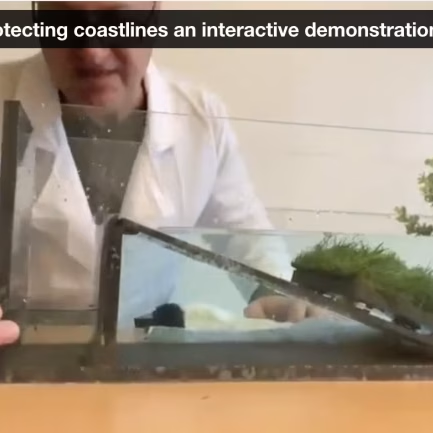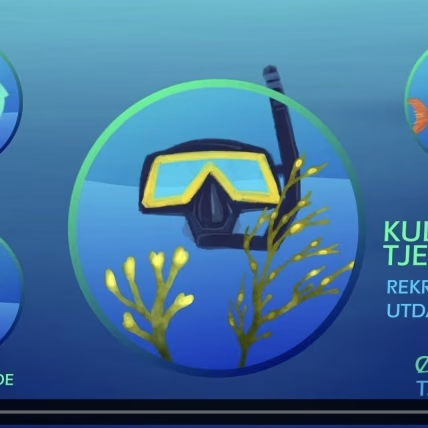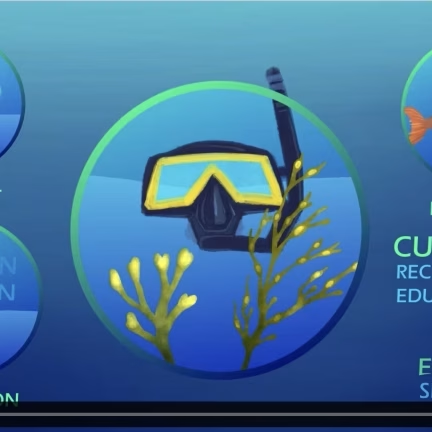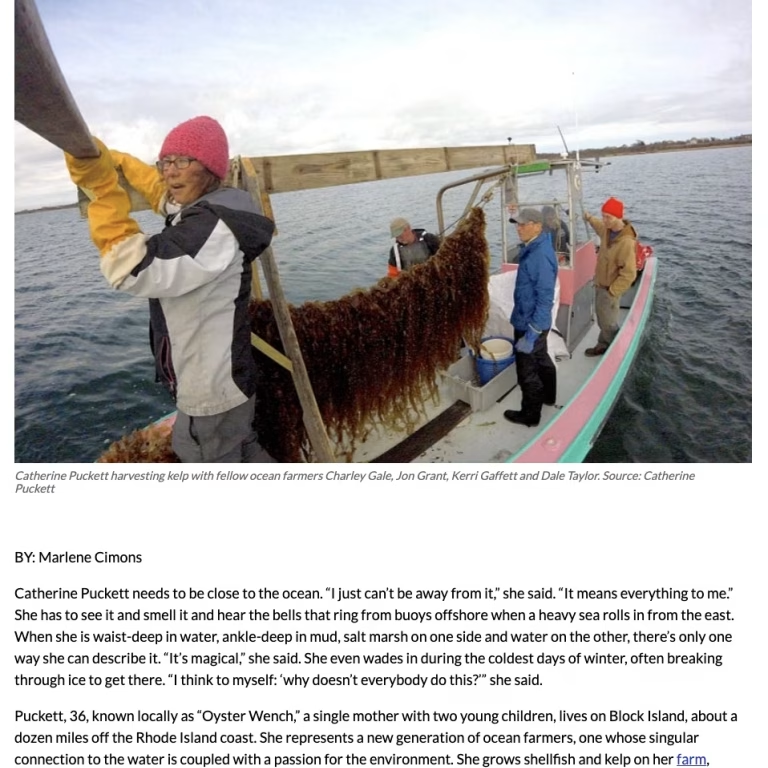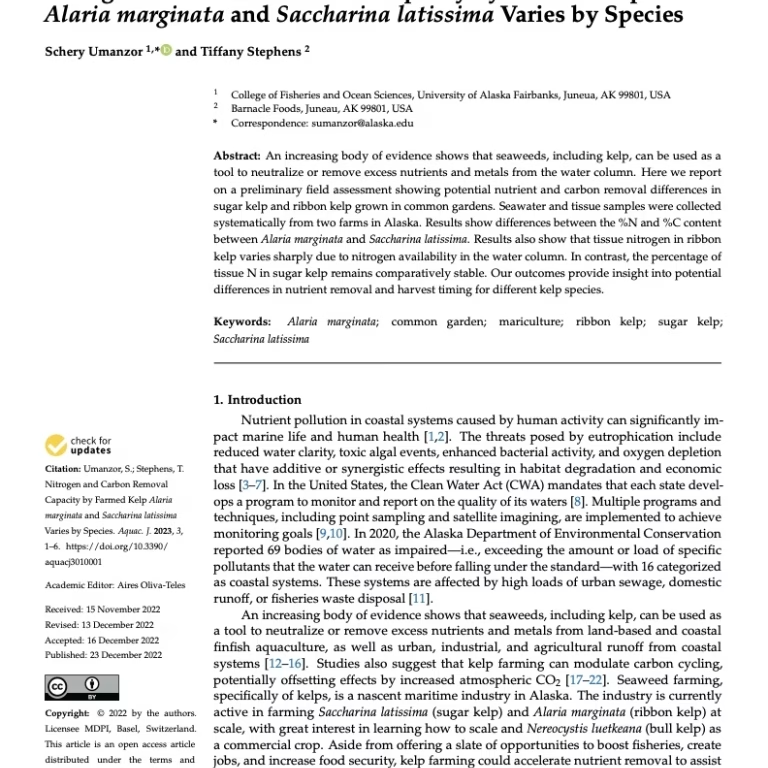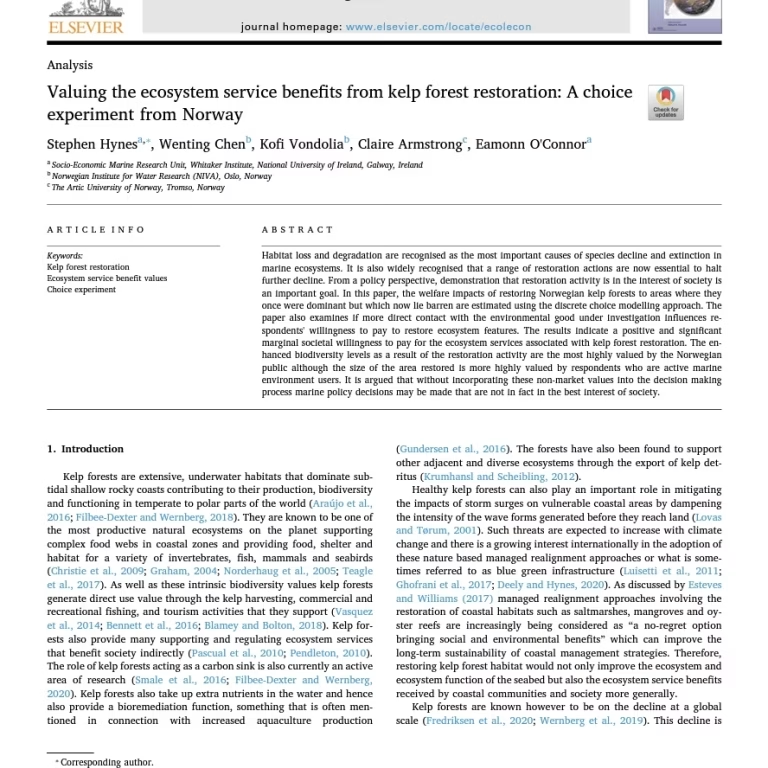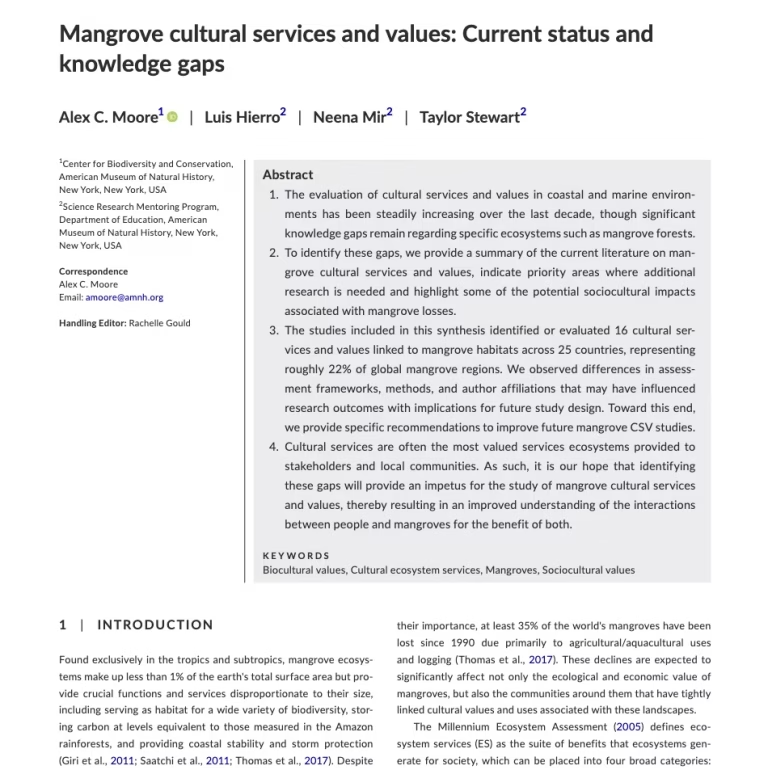Resource Library
- All
- Further Reading
- Infographic
- Map
- Online Article
- Online Exercise
- Photo
- Report
- Scientific Article
- Story Map
- Teaching Material
- Tools
- Video
- Website
Tahiry Honko – a community mangrove carbon project
Learn how Madagascar’s first mangrove carbon project is catalysing locally-led mangrove management.
World’s first underwater climate strike calls for ocean protection
Young Mauritian scientist and climate advocate, Shaama Sandooyea, has held the world’s first ever underwater climate strike at the heart of the Indian Ocean. The protest took place at the Saya de Malha Bank, a climate-critical site owing to its vast seagrass meadows, 735km off the coast of Seychelles.
Restoration of seagrasses
This video shows seagrass meadows in Portugal that have been restored, and how this was made possible through the SeagHorse project.
Rebuilding Marine Life
Sustainable Development Goal 14 of the United Nations aims to “conserve and sustainably use the oceans, seas and marine resources for sustainable development”. Achieving this goal will require rebuilding the marine life-support systems that deliver the many benefits that society receives from a healthy ocean. Here we document the recovery of marine populations, habitats and…
Blue carbon manual – Guidelines for estimating blue carbon stocks
Conservation and restoration of blue forests ecosystems has been increasingly addressed in international and national climate change mitigation policy and finance mechanisms. However, to date, countries have not incorporated coastal blue carbon into their portfolio of climate change mitigation or coastal management policies and actions, largely because the mechanisms for assessing blue carbon were not…
Blue Carbon Protocol
The Blue Carbon Protocol outlines how to perform a carbon assessment from sampling in the field to the lab analysis.
NASA and Mangroves
Mangroves are coastal ecosystems that provide important services to coastal populations. They offer natural protection against storm surges, hurricanes and tsunamis. Mangroves also contribute to fish stocks by providing nursing grounds for fish and crustaceans. As part of NASA’s Land Cover and Land Use Change program, Simard and his team have developed new remote sensing…
Mangroves: A Super Solution
This video describes mangrove forests’ capacity to protect vulnerable coastlines against the impact of sea level rise.
Blue Carbon Offsetting for Community Benefits in Kenya
James Kairo and Salim Abdalla from Mikoko Pamoja talk about their community-based mangrove carbon offset project in Kenya. This blue solution focuses on climate change mitigation and awareness creation. In an ongoing process around 4000 mangrove seedlings get planted every year, which results in carbon savings to generate direct income for the community. Thereby an…
Recognizing Ecosystem Services from Blue Carbon Ecosystems
Infographic illustrates the recognition of ecosystem services from Blue Carbon ecosystems through ecosystem connections. Infographic from the Abu Dhabi Blue Carbon Demonstration Project: https://grid.cld.bz/The-Abu-Dhabi-Blue-Carbon-Demonstration-Project/46#zoom=z
Blue Carbon Storage Capacity of Blue Forests
Blue Carbon ecosystems provide a highly valuable service by sequestering and storing atmospheric carbon. Infographic from the Abu Dhabi Blue Carbon Demonstration Project. https://grid.cld.bz/The-Abu-Dhabi-Blue-Carbon-Demonstration-Project/55#zoom=z
How do Blue Forests Provide Coastal Protection Against Storm Surges?
Blue forests ecosystems like mangroves, seagrass, kelp, and salt marshes can help protect coastal communities against storm surge and coastal flooding by absorbing wave energy. This wave tank demonstration by Steven Lutz of GRID-Arendal was originally featured in the Norwegian Blue Forests Network’s online conference, Blue Forests Week 2021.
Hvilken nytte har vi av blå skog?
Den blå skogen gir viktige økosystemtjenester som fiskebarnehager og beiteområder, kystbeskyttelse mot stormer og erosjon, karbonlagring og mye mer. Se videoen for å lære mer om disse tjenestene som tilbys av blå skoger.
Why are Blue Forests Useful?
Blue forests provide key ecosystem services like fish nurseries and grazing areas, coastline protection from storms and erosion, carbon storage, and much more. Watch to learn about the many benefits healthy blue forests provide.
A New Generation of Ocean Farmers are Reducing Pollution with Seaweed
Seaweed soaks up carbon and nitrogen, two pollutants lingering in the water. If ocean farmers devoted a little less than 5 percent of U.S. waters to growing seaweed, they could clean up an estimated 135 million tons of carbon and 10 million tons of nitrogen.
Nitrogen and Carbon Removal Capacity by Farmed Kelp Alaria marginata and Saccharina latissima Varies by Species
An increasing body of evidence shows that seaweeds, including kelp, can be used as a tool to neutralize or remove excess nutrients and metals from the water column. Here authors report on a preliminary field assessment showing potential nutrient and carbon removal differences in sugar kelp and ribbon kelp grown in common gardens.
Valuing the Ecosystem Service Benefits from Kelp Forest Restoration: A choice experiment from Norway
In this paper, the welfare impacts of restoring Norwegian kelp forests to areas where they once were dominant but which now lie barren are estimated using the discrete choice modelling approach. The paper also examines if more direct contact with the environmental good under investigation influences respondents’ willingness to pay to restore ecosystem features.
Mangrove Cultural Services and Values: Current status and knowledge gaps
The evaluation of cultural services and values in coastal and marine environments has been steadily increasing over the last decade, though significant knowledge gaps remain regarding specific ecosystems such as mangrove forests.
